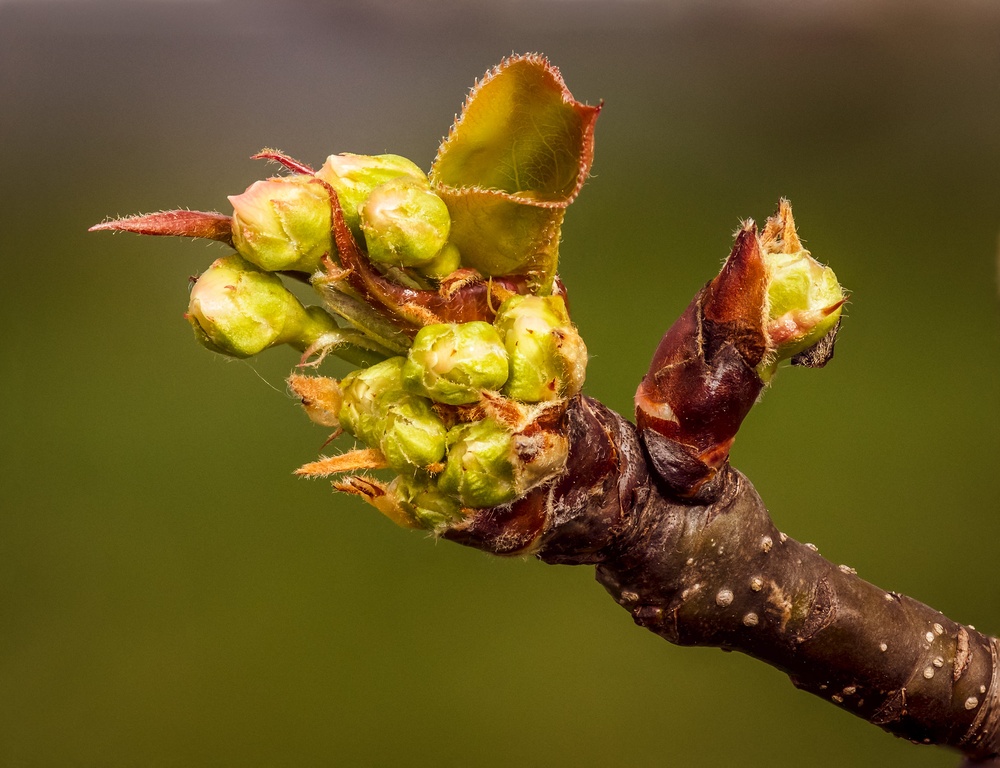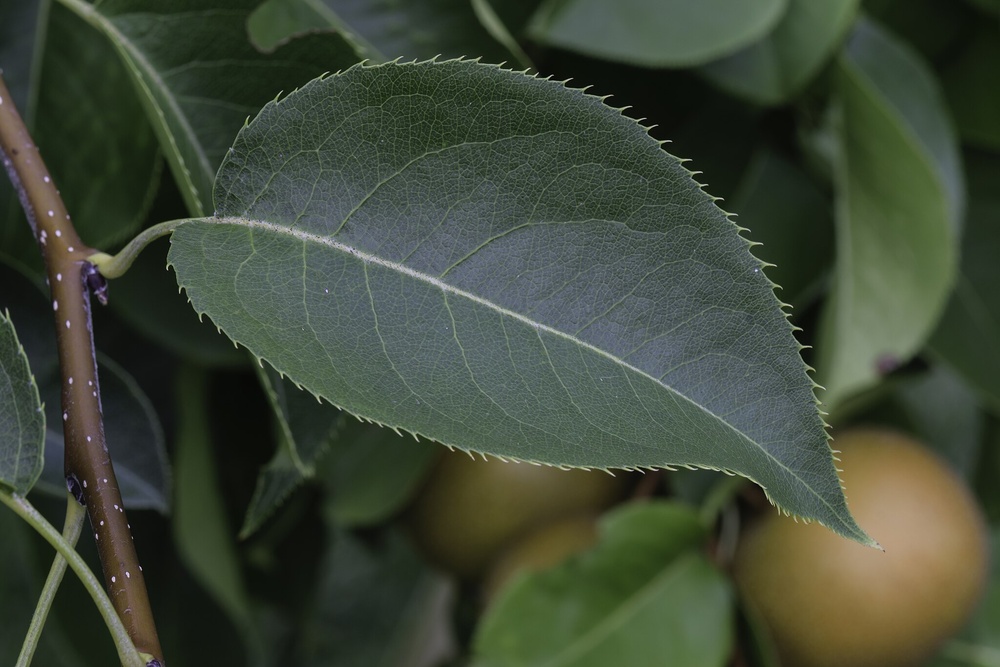Pyrus pyrifolia
Nashi peer, Aziatische peer, Zandpeer / Nashi pear
Rosaceae (Rozenfamilie)
Edible plant part (1)
Fruits
Read 'form of consumption' for safe preparation methods
Toxic plant part (1)
None
Nashi pear belongs to the small trees-large shrubs in the food forest. In the process of ecological succession it is a mid species. The growth rate is medium. Fully grown the plant has an average height of 4 to 8 meter. and a width of 3 to 6 meter.
The foliage (or leaf cover) is half-open.
This species forms a heart-shaped shallow root system. This species is non spreading in the food forest.
 foto: Puddin Tain, https://www.flickr.com/photos/puddintain850/42310682910
foto: Puddin Tain, https://www.flickr.com/photos/puddintain850/42310682910
 foto: Puddin Tain, https://www.flickr.com/photos/puddintain850/42310682910
foto: Puddin Tain, https://www.flickr.com/photos/puddintain850/42310682910
 foto: Puddin Tain, https://www.flickr.com/photos/puddintain850/46699979224
foto: Puddin Tain, https://www.flickr.com/photos/puddintain850/46699979224
 foto: PumpkinSky, https://commons.wikimedia.org/wiki/File:Pyrus_pyrifolia_Shinko_leaf_LR.jpg
foto: PumpkinSky, https://commons.wikimedia.org/wiki/File:Pyrus_pyrifolia_Shinko_leaf_LR.jpg
Growth factors
- Frost (whole plant)
-
very strong frostcold frostmild frostlight frostno frost
- Frost (flowers)
-
very strong frostcold frostmild frostlight frostno frost
- Light
-
full sunlight shadehalf shadefairly deep shadedeep shade
- Wind
-
strong sea windstrong windsome windshelteredvery sheltered
- Soil texture
-
sandloamlight clayheavy claypeat
- Soil moisture
-
inundationwetmoistdrydrought
- Groundwater level
-
very lowlowmediumhighvery high
- Soil acidity
-
very acidacidneutralalkalinevery alkaline
- Soil fertility
-
very richrichaveragepoorvery poor
Flowering and pollination
- Flowering period (peak)
- early april, mid april, end of april
- Flowering period (length)
- several weeks
- Pollination vector
- insects
- Plant reproductive fertility
- partially self-fertile, self sterile, self-fertile (sf), varies per cultivar
Life Span and Plant Health
Disease susceptibility
resistantMain serious pests and diseases
fire blightHarvest and Consumption
Fruits
- Productivity - peak (yield) - maximum
- Very high
- Harvest location edible part
- Above reach, high, but within reach
- Harvesting period - start
- Varies per cultivar, mid august, end of august, early september, mid september, end of september
- Harvesting period - length
- Several weeks
- Harvesting period - uniformity
- High
- Suitable harvesting methods
- Hand
- Form of consumption
- Fresh, processed
- Natural storability
- Several months
- Suitable markets
- Niche
- Productive life span - start (year) - minimum
- 3
- Productive life span - peak (year) - minimum
- 12
- Productive life span - peak (year) - maximum
- 20
- Productive life span - end (year) - maximum
- 100









































